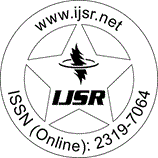Downloads: 114 | Views: 373 | Weekly Hits: ⮙1 | Monthly Hits: ⮙1
Informative Article | Medicine Science | India | Volume 3 Issue 11, November 2014 | Popularity: 6.7 / 10
Nasal Septal Perforation Due to Button Battery - A Case Report
Srikanth Myla, Ajmath Shaik
Abstract: Nasal septal perforation is a complete interruption of mucosal and cartilaginous tissues of the nasal septum. Septal perforations are common due to local trauma and as a complication of nasal surgeries and few systemic diseases like syphilis. Foreign bodies in nose are not uncommon and are more common in children A button battery in the nose is a unusual foreign body and causing septal perforation is a rare entity. Button batteries are used in many electronic devices and and toy. Its small size make them attractive to children. Being small, they can be easily inserted into oral cavity and nose, as foreign bodies where its battery substances can cause liquefaction necrosis by contact with the human moist tissue in a fast period of time resulting in tissue necrosis followed by perforation Here we present a case report nasal of a nasal septal perforation in a male child with nasal septal perforation 15 days after the insertion and removal of the foreign body
Keywords: button battery, nasal septum, perforation, pressure necrosis, corrosive damage
Edition: Volume 3 Issue 11, November 2014
Pages: 2000 - 2001
Please Disable the Pop-Up Blocker of Web Browser
Verification Code will appear in 2 Seconds ... Wait
